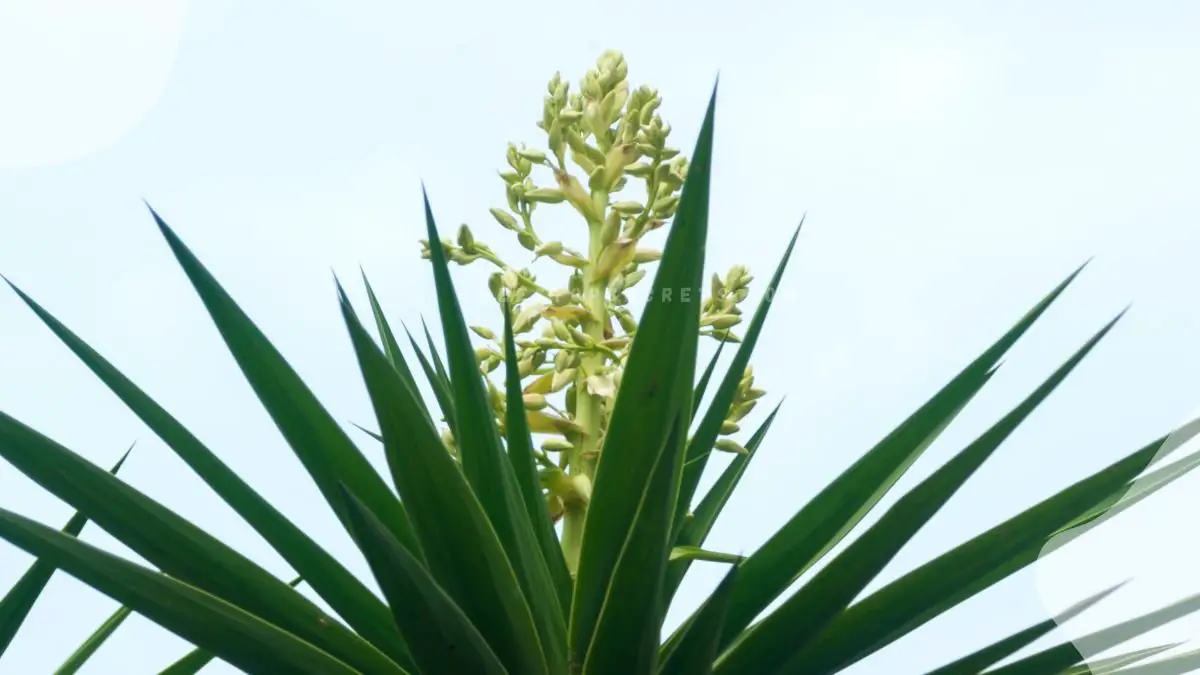In El Salvador, the national flower, a beautiful plant, holds a special place in the hearts of its Salvadoran people. The Izote flower, also known as the Yucca blossom, symbolizes resilience and strength in contrast to its delicate appearance. This iconic bloom not only beautifies the landscapes but also represents the country's enduring spirit amidst challenges. Embraced for its significance, the Izote flower stands tall as a symbol of national pride and unity.
Key Takeaways
- Flor de Izote, the national flower of El Salvador, holds significant cultural and historical importance.
- Understanding the cultural and historical context of Flor de Izote enriches appreciation for Salvadorian heritage.
- Incorporating Flor de Izote in Salvadorian food adds a unique and traditional touch to culinary creations.
- Preparing Flor de Izote requires specific techniques to ensure its flavors are showcased effectively.
- Exploring Salvadorian cuisine provides a deeper insight into the rich culinary traditions of the country.
- Embracing Flor de Izote in both cuisine and culture allows for a holistic experience of El Salvador's traditions.
Discovering Flor de Izote
Origins and Significance
The Flor de Izote, with its fresh blossoms, holds a rich history as El Salvador's national flower, dating back to ancient times. Its selection symbolizes the country's deep-rooted cultural heritage and natural beauty. The decision to name the Flor de Izote as the national flower was influenced by its historical significance and widespread presence in El Salvador.
In Salvadorian culture, the Flor de Izote embodies various symbolic meanings, representing resilience, strength, and unity. This beautiful plant is revered for its ability to thrive in challenging environments, mirroring the spirit of the Salvadorian people. Its selection as the national flower signifies the nation's pride in its heritage and connection to the land.
The choice of the Flor de Izote as El Salvador's national flower goes beyond its fresh blossoms and striking appearance. It serves as a powerful emblem of national identity, reflecting the country's values, traditions, and history. The Flor de Izote stands as a unifying symbol that resonates with Salvadorians across generations.
Symbolism in El Salvador
The Flor de Izote carries profound symbolism in Salvadorian culture, representing endurance, purity, and resilience. Its white flowers symbolize peace and hope, embodying the nation's aspirations for a bright future. The plant's significance extends beyond aesthetics, serving as a reminder of El Salvador's strength and perseverance.
Within El Salvador, the Flor de Izote is more than just a beautiful plant; it is a source of national pride and unity. Its presence in various aspects of Salvadorian life underscores its importance as a cultural symbol. The Flor de Izote is deeply ingrained in local traditions, celebrations, and folklore, highlighting its enduring significance in the country.
The Flor de Izote represents a connection to the land and a sense of belonging for Salvadorians. Its symbolism transcends borders, resonating with diaspora communities worldwide. As a cherished emblem of El Salvador, the Flor de Izote serves as a powerful reminder of the country's rich heritage and collective identity.
Characteristics and Growth
The Izote plant, known for its edible flowers, features a distinctive white flowering top that blooms with elegance. Its large desert plant characteristics make it well-suited to El Salvador's climate, thriving in arid conditions with minimal water requirements. The plant's adaptability mirrors the resourcefulness and resilience of the Salvadorian people.
To cultivate Izote plants successfully in El Salvador, specific growth conditions are essential. These include well-drained soil, ample sunlight, and protection from frost. The plant's ability to flourish in diverse environments reflects its versatility and robust nature. Despite its delicate appearance, the Izote plant exhibits remarkable strength and vitality.
Cultural and Historical Context
Cultural Significance
The Flor de Izote holds immense cultural significance in El Salvador, deeply intertwined with various traditions. It plays a vital role in festivals, ceremonies, and daily life, symbolizing resilience and beauty. The flower's presence is ubiquitous in Salvadorian culture, reflecting a sense of national pride.
- Example: During the May Day celebrations, the Flor de Izote is prominently featured in parades and decorations, showcasing its importance in Salvadorian festivities.
- Example: In Salvadorian weddings, the bride often adorns her hair with Flor de Izote flowers as a symbol of purity and prosperity.
Delving into art, literature, and folklore, the Flor de Izote serves as a muse for Salvadorian creativity. Artists draw inspiration from its intricate beauty, poets weave its symbolism into verses, and folk tales narrate its mystical origins.
- Example: Renowned Salvadorian painters have depicted the Flor de Izote in vibrant hues, capturing its essence as a national emblem.
- Example: Folklore stories often revolve around the Flor de Izote, portraying it as a symbol of love, strength, and endurance.
Historical Uses
Throughout history, the Flor de Izote has played diverse roles in El Salvadorian society. From ancient civilizations to modern times, this flower has been revered for its versatility and symbolism. Traditionally, it was utilized in medicinal practices and rituals to bring luck and protection.
- Example: Indigenous tribes used the Flor de Izote in healing ceremonies, believing in its spiritual properties to ward off evil spirits.
- Example: During colonial times, the flower's petals were used in traditional remedies for various ailments, showcasing its importance in early Salvadorian medicine.
As time progressed, the significance of the Flor de Izote evolved, adapting to changing societal norms and beliefs. Its historical uses reflect a blend of indigenous customs and colonial influences that have shaped Salvadorian culture over centuries.
- Example: In the post-independence era, the Flor de Izote became a symbol of national identity, embodying the spirit of resilience and unity among Salvadorians.
- Example: Today, the flower continues to be cherished for its historical legacy, serving as a reminder of El Salvador's rich cultural heritage.
Role in Salvadorian Cuisine
The Flor de Izote plays a crucial role in Salvadorian cuisine, adding a unique touch to traditional dishes. Known for its delicate flavor and texture, this edible flower enhances the culinary experience with its subtle sweetness and floral notes.
- Example: In Salvadorian tamales, the Flor de Izote is used as a filling ingredient, imparting a distinct taste that sets these delicacies apart.
- Example: Chefs often incorporate the flower into salads or stews to add a refreshing twist to classic recipes.
Flor de Izote in Salvadorian Food
Traditional Dishes
Salvadorian cuisine showcases the Flor de Izote in various traditional dishes. One popular dish is "Ensalada de Flor de Izote," a refreshing salad featuring the flower's tender petals. This dish highlights the cultural significance of Flor de Izote, symbolizing resilience and beauty in Salvadorian culinary heritage.
The delicate flavors and aromas of Flor de Izote elevate dishes like "Tamales de Elote con Flor de Izote," a corn tamale infused with the flower's essence. These traditional recipes not only tantalize the taste buds but also serve as a tribute to El Salvador's rich cultural tapestry.
- Pros:
- Adds unique flavor profiles
- Represents cultural heritage
- Cons:
- Availability may be limited outside El Salvador
Cooking with Chicken
In Salvadorian cooking, chicken and Flor de Izote create a harmonious culinary fusion. Pollo en Salsa de Flor de Izote, a savory chicken dish simmered in a sauce infused with the flower, exemplifies this delightful pairing. The tender chicken beautifully absorbs the floral notes of the Flor de Izote, creating a symphony of flavors.
Exploring popular recipes like "Arroz con Pollo y Flor de Izote," where chicken and rice come together with the delicate petals, showcases how this ingredient transforms simple dishes into gastronomic delights. The marriage of chicken and Flor de Izote offers a unique dining experience that encapsulates El Salvador's vibrant food culture.
- Steps for Cooking with Chicken and Flor de Izote:
- Prepare the chicken by marinating it with spices.
- Sautee the Flor de Izote petals to release their flavors.
- Combine the chicken and Flor de Izote in a flavorful sauce.
- Key Ingredients:
- Chicken
- Flor de Izote petals
- Spices and herbs
Preparing Flor de Izote
Ingredients Overview
To prepare dishes with the national flower of El Salvador, Flor de Izote, you will need fresh Izote flowers, garlic, onion, tomatoes, and bell peppers. These ingredients form the base for many traditional Salvadorian recipes featuring Flor de Izote.
Complementary ingredients like cilantro, oregano, and achiote are commonly used to enhance the flavors of Flor de Izote dishes. Cilantro adds a fresh and vibrant taste, while oregano brings a warm and earthy aroma to the dish. Achiote provides a subtle hint of peppery sweetness that complements the delicate flavor of the Izote flowers.
In Salvadorian cuisine, local produce such as plantains, yuca, and corn are often paired with Flor de Izote. These ingredients add depth and variety to the dishes, creating a harmonious blend of flavors and textures. Spices like cumin and paprika are also frequently used to season Flor de Izote recipes, adding a rich and aromatic profile to the dish.
Cooking Instructions
Start by carefully cleaning the Izote flowers, removing any dirt or impurities. Then, chop the garlic, onion, tomatoes, and bell peppers finely to create a flavorful base for your dish. Saute these ingredients in a pan until they are fragrant and translucent.
Add the cleaned Izote flowers to the pan and stir gently to incorporate them with the other ingredients. Allow the flowers to cook slowly over low heat, allowing their natural flavors to infuse into the dish. Season with salt, pepper, cilantro, and oregano to taste.
For best results, cook the Flor de Izote until it is tender but still retains its shape and vibrant color. Avoid overcooking as it can result in a mushy texture and loss of flavor. Serve your Flor de Izote dish hot with a side of rice or tortillas for a complete meal.
To master the art of cooking with Flor de Izote, remember to experiment with different spice combinations and cooking techniques. Don't be afraid to get creative in the kitchen and tailor recipes to suit your personal taste preferences. Practice makes perfect when it comes to preparing delicious dishes with this unique Salvadorian ingredient.
Exploring Salvadorian Cuisine
Understanding the Basics
Working with the Flor de Izote involves delicate handling to preserve its flavors and textures. The cassava root is a staple ingredient in Salvadorian cuisine, known for its versatility and nutritional value.
Proper preparation of the Flor de Izote petals is crucial to ensure they are free from bitterness and retain their natural taste. The petals can be used fresh or cooked, adding a unique touch to various dishes.
Incorporating the Flor de Izote into meals introduces a subtle floral flavor with hints of sweetness. It offers essential vitamins and minerals, enhancing the nutritional content of Salvadorian dishes.
Flor de Izote's Place in the Cuisine
The Flor de Izote plays a significant role in defining Salvadorian cuisine, providing a distinct flavor profile that sets it apart from other culinary traditions. Its versatility allows for creative interpretations in both traditional and modern recipes.
As a symbol of culinary identity, the Flor de Izote represents El Salvador's rich gastronomic heritage and cultural significance. Its presence in various dishes reflects the country's deep-rooted connection to nature and tradition.
Looking ahead, the future of the Flor de Izote in modern Salvadorian gastronomy seems promising, with chefs and food enthusiasts exploring innovative ways to showcase this unique ingredient. Its integration into contemporary culinary trends highlights its enduring appeal and relevance.
Summary
In exploring the significance of Flor de Izote in Salvadorian culture and cuisine, you've unearthed a rich tapestry of tradition and flavor. From its cultural symbolism to its culinary versatility, Flor de Izote stands as a proud emblem of El Salvador's heritage. By delving into its historical roots and culinary applications, you've gained a deeper appreciation for this national flower's role in shaping Salvadorian identity.
As you continue to explore Salvadorian cuisine and immerse yourself in the flavors of Flor de Izote, consider incorporating elements of this rich culture into your own culinary adventures. Whether by trying out traditional recipes or seeking out Salvadorian eateries in your area, embracing the essence of Flor de Izote can add a vibrant touch to your dining experiences. Let the spirit of El Salvador's national flower infuse your kitchen with a taste of authenticity and tradition.
Frequently Asked Questions
What is Flor de Izote?
Flor de Izote is the national flower of El Salvador, also known as the yucca flower. It holds cultural significance and is commonly used in Salvadorian cuisine.
How is Flor de Izote used in Salvadorian cuisine?
Flor de Izote is used in various traditional Salvadorian dishes like soups, salads, and stews. Its delicate flavor and unique texture add a special touch to the culinary experience.
Can you provide tips for preparing Flor de Izote?
To prepare Flor de Izote, remove the outer petals and chop the inner petals finely. It can be sautéed, boiled, or added raw to dishes. Ensure thorough cleaning before use.
What are some popular Salvadorian dishes that feature Flor de Izote?
Popular Salvadorian dishes featuring Flor de Izote include Ensalada de Flor de Izote (yucca flower salad), Sopa de Pata with Flor de Izote (cow foot soup with yucca flower), and Guiso de Flor de Izote (yucca flower stew).
Why is it important to discover the cultural and historical context of Flor de Izote?
Understanding the cultural and historical context of Flor de Izote provides insight into the traditions and heritage of El Salvador. It deepens appreciation for the significance of this national symbol in Salvadorian culture.
Image Source: Paid image from CANVA




